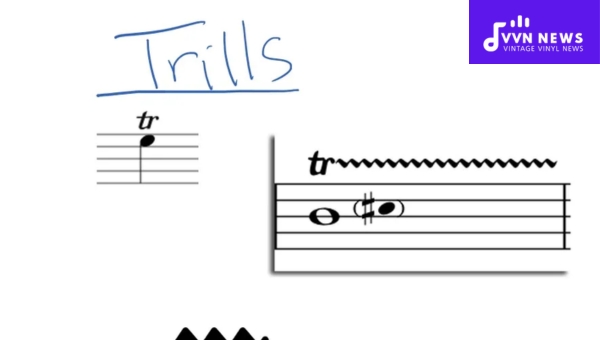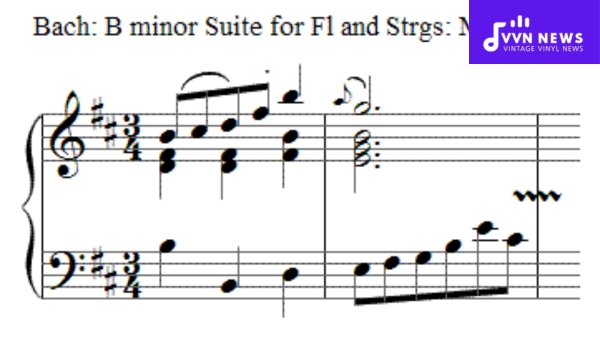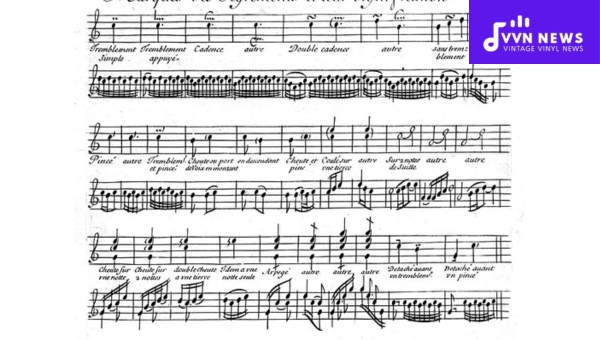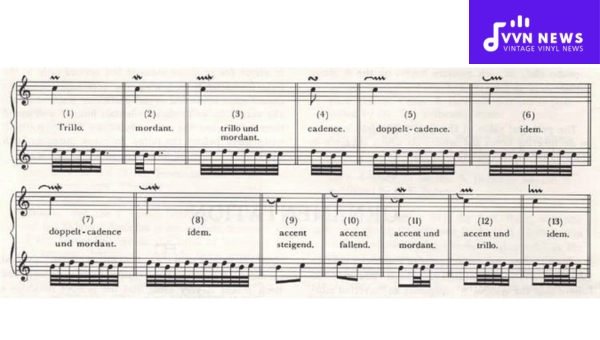Music ornaments, a term that may seem foreign to many, essentially refers to musical flourishes used to enhance a piece of music.
They add depth and nuance, allowing for further exploration of the piece’s emotional timber and artistic interpretation.
As a music enthusiast, diving into the world of these fascinating embellishments can deepen your knowledge and enhance your enjoyment of the music you love.
Sitting comfortably in your favorite chair with your preferred symphony playing in the background, imagine having additional layers of appreciation added to what you’re hearing.
By exploring the concept, history, and types of music ornaments, we will uplift this listening experience into something more enriching.
From baroque melodies to modern pop hooks, these musical gems can be found everywhere if you know what you’re seeking!
When Did the Ornamentation Start?
Ornamentation in music is a concept that dates back to the Renaissance, approximately from the 14th to 16th century.
It was during the subsequent Baroque era (1600-1750), that composers began exploring and experimenting with a wide range of ornamental techniques.
The popularity of these detailed embellishments blossomed as they added both expressiveness and depth to their compositions.
Performances in this period were often expected to be adorned with intricate extemporizations by musicians versed in improvisation.
As musical notation evolved, these improvisations were formalized into written instructions called ornaments for consistency and ease of learning across diverse musical landscapes.
Composers such as Johann Sebastian Bach, Antonio Vivaldi, and Claudio Monteverdi extensively used ornaments in their compositions–setting a precedent for later periods.
Boldly innovating while thoughtfully weaving intricate details within music has been a part of our musical heritage since time immemorial, truly showcasing how ornamentation is intertwined with our melodious history.
Also Read: Mastering Chords In A Minor [Improve Your Composition Skills]
What Is a Trill?
A trill is one of the most common forms of music ornaments, creating a vibrant effect by rapidly alternating between two adjacent notes.

The primary note and the one directly above it in the scale are interchanged in quick succession.
In sheet music, trills are usually indicated with a “tr” symbol above the stave.
Trills are rich in expressiveness, effectively conveying dramatic anticipation or resolution within a piece.
They are integral embellishments in various musical genres – from Classical symphonies to blues improvisations.
A well-executed trill can breathe life into your performance, adding texture and complexity to the melody line.
Experimenting with them can be a fun way to add a personal touch to your interpretation of music.
How Are Mordents Executed?
Let’s take a closer look at mordents. A mordent is an ornament on a single note, typically encompassing the main note, the note above or below it, and then the original note again.
Executing Upper Mordents
An upper mordent, otherwise known as a pralltriller or inverted mordent, begins with the main note followed by the next higher pitch within the scale, and then returns to the principal note.
It’s represented by a squiggle with a short vertical bar through it.
Executing Lower Mordents
In contrast to upper mordents, lower mordents (also called simply mordents in Baroque terminology) involve starting on the designated pitch, quickly moving down to the next lower pitch within the key, then returning to the initial pitch. This is represented by a short squiggle.
The speed of these rapid-fire notes may vary depending on musical context or performer preference.
By mastering these techniques, you can add significant expression and flavor to your music that will engage your listeners even more.
Also Read: How To Transpose Treble To Bass Clef [Music Guide]
What is an Appoggiatura?
An appoggiatura is a type of music ornament that temporarily shifts the melodic emphasis, creating a dissonant note that provides an expressive lean into the main note.

Technically speaking, it’s a non-chord note preceding a resolved, usually consonant note.
When notated, an appoggiatura is often presented as a small grace note slurred to a principal note.
This embellishment can be long (taking up half or more of the time value of the main note) or short.
It works like this: you play an appoggiatura before its corresponding melody note, effectively ‘leaning’ into that melody for emotional impact.
What Is an Acciaccatura?
The acciaccatura is an intricate type of grace note, a decorative added touch to the primary melody.
It is typically notated with a small note placed just before an essential note, featuring a diagonal line through its stem.
These stylish embellishments are interpreted as very quick notes – virtually crushed into the main note that follows it, hence its Italian name which means “crushed”.
They add some spice to the melody line and often serve to heighten tension or bring vibrancy to a piece of music.
Executed properly, an acciaccatura brings elegance and expressivity to your musical performance.
To fully appreciate its charm, listening carefully as you revel in your next symphony might be helpful.
What Are the Types of Turns?
Turns, or gruppettos, have been gracing the scores of music for centuries. There are essentially two types: the regular turn and the inverted turn.

Regular Turn
A regular turn is a specific sequence of four notes placed around a principal note, often denoted by the symbol ‘&’.
This ornament starts with the note above the principal one, then moves to the principal note, then to the note below it, and finally returns to the principal note.
For instance, if we use ‘C’ as our principal note (note), a regular turn would be ‘D-C-B-C’. The rhythm and speed can vary based on expressive intent.
Inverted Turn
An inverted turn, as its name suggests, flips this sequence- starting lower rather than higher.
Using ‘C’ as our reference again (note), an inverted turn pattern would be ‘B-C-D-C’. This switch creates a subtly distinct musical color.
These stylistic tools might seem small on their own but they can drastically shape how music unfolds before your ears.
They serve as sparkling decorations shaping music’s charm in richly subtle ways.
Also Read: How To Transpose Into The Tenor Clef? [Mastering In Notation]
FAQs
What are some common types of music ornaments used in classical compositions?
Notably, trills, grace notes, and glissandos are common ornaments that bring vibrancy to classical pieces.
How do ornaments affect the overall tempo of a piece?
Ornaments tend to embellish the melody and should be integrated smoothly, so they don’t disturb the piece’s tempo.
Can I find ornaments in contemporary popular music?
Absolutely! Modern pop often utilizes subtle pitch bends and grace notes to add flair to vocals.
Are all music ornaments meant to be played as written by the composer?
Some composers indicate exact ornament execution, while others leave interpretation up to the performer’s discretion.
How do I start incorporating ornaments into my music playing?
Begin by mastering simple ornaments like appoggiaturas or mordents, then experiment with incorporating them into familiar melodies.
Also Read: How To Transpose Treble To Bass Clef [Music Guide]
Conclusion
Ornamentation breathes life into music, transforming simple melodies into engaging masterpieces.
If you’re a musician aiming to add expression to your performances or a listener seeking a richer experience, appreciating these musical nuances elevates your connection to the art.
Remember that music is an ever-evolving language. By exploring and employing these decorative elements, you enhance not only your creative palette but also the shared tapestry of sound that resonates with audiences everywhere.








